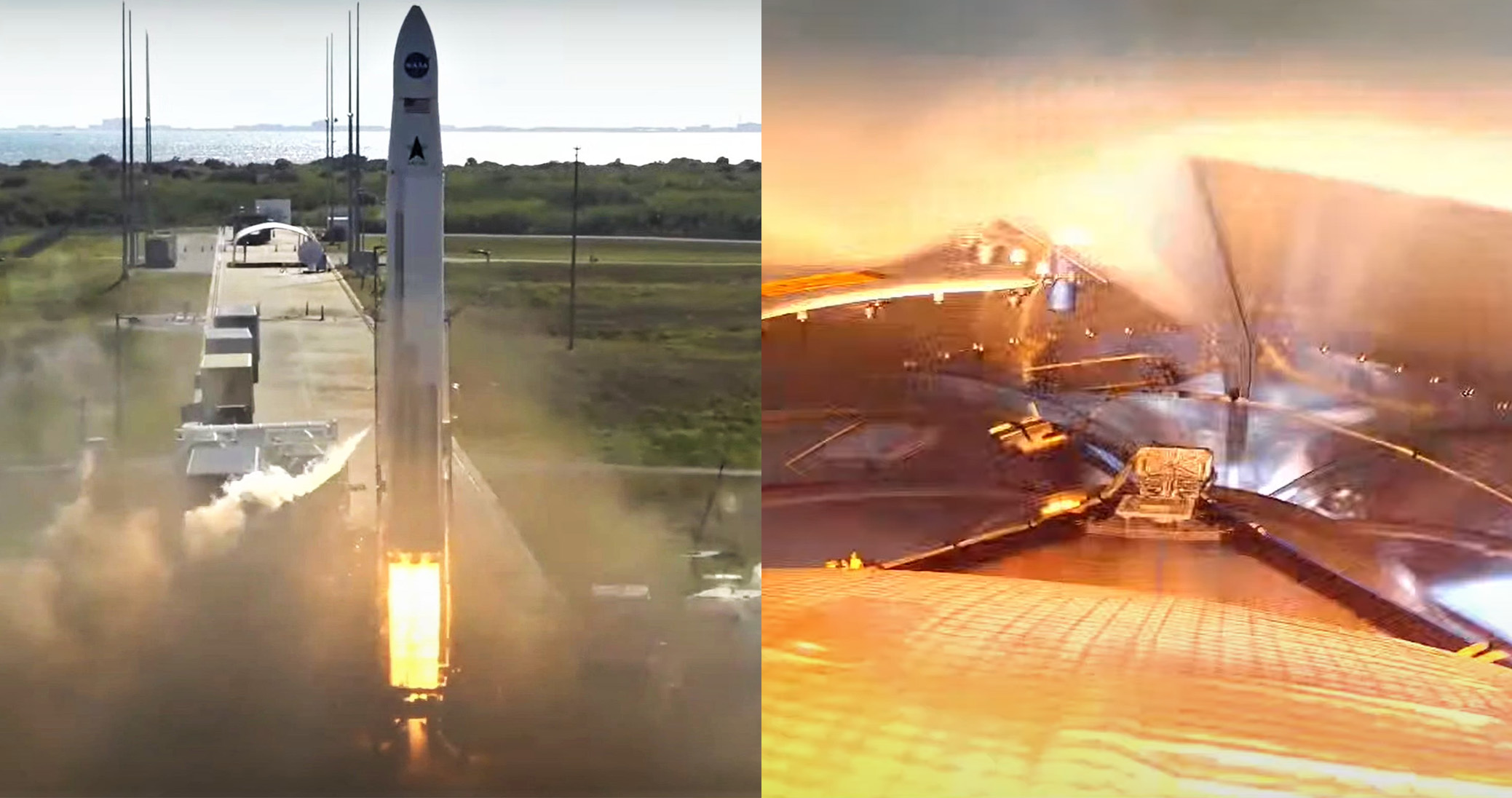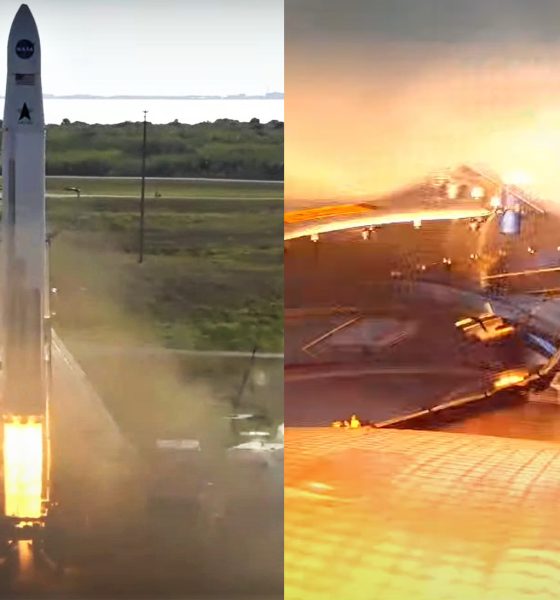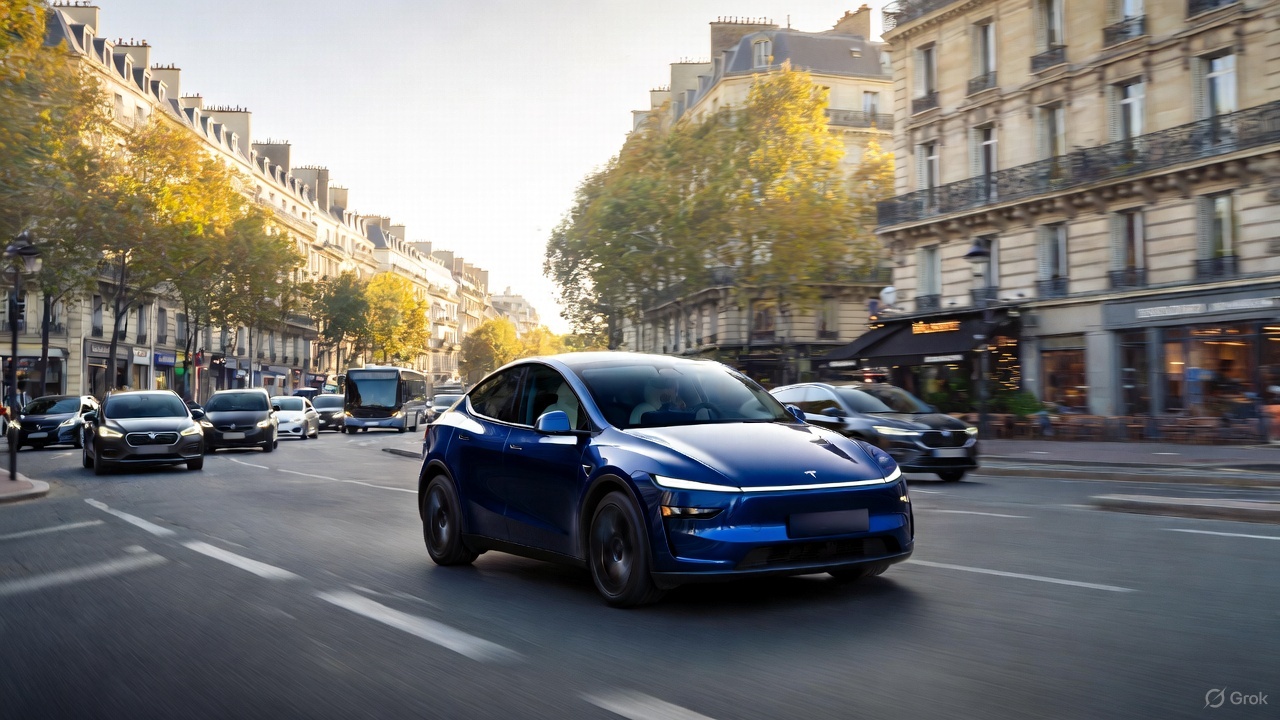

News
Astra ‘Rocket 3’ nosecone dooms first Florida launch attempt
On Thursday, February 10th, Astra Space’s Rocket 3.3 launch vehicle took off from Cape Canaveral Space Force Station (CCSFS) Launch Complex 46 (LC-46).
Unfortunately, while liftoff and booster ascent appeared to be more or less perfect, Rocket 3’s payload fairing failed to separate, triggering a series of events that caused its upper stage to enter an uncontrolled and unrecoverable spin after burning for just a few seconds. Astra was unable to salvage the spinning rocket, resulting in a mission failure well short of orbit.
“Unfortunately we heard that an issue has been experienced during flight that prevented the delivery of our customer payloads to orbit today. We are deeply sorry to our customers NASA, University of Alabama, the University of Mexico and the University of California Berkeley,” said Astra Space Director of Product Management Carolina Grossman. “More information will be provided as we complete the data review.”
Today’s launch comes after two previous aborted launch attempts. The first attempt on February 5th was delayed due to a CCSFS radar system malfunction. The second launch delay came on February 7th, after the rocket aborted briefly after ignition because of a minor telemetry issue.
The Mission
NASA’s first mission under the agency’s Venture Class Launch Services (VCLS) Demonstration 2 contract hoped to launch four CubeSats to space as early as February 5th, 2022. The satellites, which made up the agency’s 41st Educational Launch of Nano-satellites (ELaNa) mission, were the first VCLS payloads launched – albeit unsuccessfully – from Cape Canaveral’s LC-46 pad, which last supported NASA’s Orion spacecraft Ascent Abort 2 (AA-2) test flight in July 2019.
The satellites onboard the flight were developed by three universities and one NASA center:
- BAMA 1 (University of Alabama, Tusscolusa)
- INCA (New Mexico State University, Las Cruces)
- QubeSat (University of California, Berkeley)
- R5-S1 (NASA’s Johnson Space Center, Houston)
The ELaNa 41 mission CubeSats were selected through NASA’s CubeSat Launch Initiative (CSLI) and were assigned to the mission by NASA’s Launch Services Program based at Kennedy. CSLI provides launch opportunities for small satellite payloads built by universities, high schools, NASA Centers, and non-profit organizations.
About Astra
Founded in 2016, Astra Space is an American launch vehicle company based in Alameda, California. Astra’s official vision “is to Improve Life on Earth from Space by creating a healthier and more connected planet.” The company hopes to secure a large portion of the small satellite launch market, stating that it “offers the lowest cost-per-launch dedicated orbital launch service of any operational launch provider in the world.”
As of November 2021, Astra charges around $2.5-3.5M for a dedicated Rocket 3 launch, which can deliver up to 150 kg (330 lb) to low Earth orbit (LEO). In comparison, for a dedicated Electron launch, Rocket Lab charges about $7.5M for 300 kg (660 lb) to LEO. For customers willing to accept a one-size-fits-all rideshare solution, SpaceX charges $1M for 200 kg (440 lb) to LEO or higher sun-synchronous orbits (SSOs).
While the aerospace company is based out of California, its frequent orbital and suborbital test flights have all been conducted at the Pacific Spaceport Complex in Kodiak, Alaska. Prior test flights used Rocket 1, Rocket 2, and Rocket 3 prototypes as Astra refined its design and embraced a hardware-rich development style that didn’t shy away from failure.
Rocket 3.3 reached orbit for the first time – carrying an instrumented boilerplate payload for the United States Space Force – on November 21st, 2021. Less than two months later, Rocket 3.3 (serial number LV08) attempted to carry several NASA-sponsored cubesats into orbit on February 10th, 2022 – also the rocket’s first East Coast launch. Like Rocket 3.3’s predecessors, the two-stage vehicle was fueled with liquid oxygen (LOx) and refined kerosene (RP-1). Powered by five Delphin engines, the first stage produces up to ~145 kilonewtons (32,500 lbf) of thrust at liftoff. The second stage is powered by one pressure-fed Aether engine that delivers about 3.3 kN (740 lbf) of thrust in the vacuum of space.
The unsuccessful launch attempt occurred just three months after Astra applied for their Federal Aviation Administration (FAA) launch license and less than one day after receiving that license.

News
Man credits Grok AI with saving his life after ER missed near-ruptured appendix
The AI flagged some of the man’s symptoms and urged him to return to the ER immediately and demand a CT scan.

A 49-year-old man has stated that xAI’s Grok ended up saving his life when the large language model identified a near-ruptured appendix that his first ER visit dismissed as acid reflux.
After being sent home from the ER, the man asked Grok to analyze his symptoms. The AI flagged some of the man’s symptoms and urged him to return immediately and demand a CT scan. The scan confirmed that something far worse than acid reflux was indeed going on.
Grok spotted what a doctor missed
In a post on Reddit, u/Tykjen noted that for 24 hours straight, he had a constant “razor-blade-level” abdominal pain that forced him into a fetal position. He had no fever or visible signs. He went to the ER, where a doctor pressed his soft belly, prescribed acid blockers, and sent him home.
The acid blockers didn’t work, and the man’s pain remained intense. He then decided to open a year-long chat he had with Grok and listed every detail that he was experiencing. The AI responded quickly. “Grok immediately flagged perforated ulcer or atypical appendicitis, told me the exact red-flag pattern I was describing, and basically said “go back right now and ask for a CT,” the man wrote in his post.
He copied Grok’s reasoning, returned to the ER, and insisted on the scan. The CT scan ultimately showed an inflamed appendix on the verge of rupture. Six hours later, the appendix was out. The man said the pain has completely vanished, and he woke up laughing under anesthesia. He was discharged the next day.
How a late-night conversation with Grok got me to demand the CT scan that saved my life from a ruptured appendix (December 2025)
byu/Tykjen ingrok
AI doctors could very well be welcomed
In the replies to his Reddit post, u/Tykjen further explained that he specifically avoided telling doctors that Grok, an AI, suggested he get a CT scan. “I did not tell them on the second visit that Grok recommended the CT scan. I had to lie. I told them my sister who’s a nurse told me to ask for the scan,” the man wrote.
One commenter noted that the use of AI in medicine will likely be welcomed, stating that “If AI could take doctors’ jobs one day, I will be happy. Doctors just don’t care anymore. It’s all a paycheck.” The Redditor replied with, “Sadly yes. That is what it felt like after the first visit. And the following night could have been my last.”
Elon Musk has been very optimistic about the potential of robots like Tesla Optimus in the medical field. Provided that they are able to achieve human-level articulation in their hands, and Tesla is able to bring down their cost through mass manufacturing, the era of AI-powered medical care could very well be closer than expected.
News
Tesla expands Model 3 lineup in Europe with most affordable variant yet
The Model 3 Standard still delivers more than 300 miles of range, potentially making it an attractive option for budget-conscious buyers.

Tesla has introduced a lower-priced Model 3 variant in Europe, expanding the lineup just two months after the vehicle’s U.S. debut. The Model 3 Standard still delivers more than 300 miles (480 km) of range, potentially making it an attractive option for budget-conscious buyers.
Tesla’s pricing strategy
The Model 3 Standard arrives as Tesla contends with declining registrations in several countries across Europe, where sales have not fully offset shifting consumer preferences. Many buyers have turned to options such as Volkswagen’s ID.3 and BYD’s Atto 3, both of which have benefited from aggressive pricing.
By removing select premium finishes and features, Tesla positioned the new Model 3 Standard as an “ultra-low cost of ownership” option of its all-electric sedan. Pricing comes in at €37,970 in Germany, NOK 330,056 in Norway, and SEK 449,990 in Sweden, depending on market. This places the Model 3 Standard well below the “premium” Model 3 trim, which starts at €45,970 in Germany.
Deliveries for the Standard model are expected to begin in the first quarter of 2026, giving Tesla an entry-level foothold in a segment that’s increasingly defined by sub-€40,000 offerings.
Tesla’s affordable vehicle push
The low-cost Model 3 follows October’s launch of a similarly positioned Model Y variant, signaling a broader shift in Tesla’s product strategy. While CEO Elon Musk has moved the company toward AI-driven initiatives such as robotaxis and humanoid robots, lower-priced vehicles remain necessary to support the company’s revenue in the near term.
Reports have indicated that Tesla previously abandoned plans for an all-new $25,000 EV, with the company opting to create cheaper versions of existing platforms instead. Analysts have flagged possible cannibalization of higher-margin models, but the move aims to counter an influx of aggressively priced entrants from China and Europe, many of which sell below $30,000. With the new Model 3 Standard, Tesla is reinforcing its volume strategy in Europe’s increasingly competitive EV landscape.
News
Tesla FSD (Supervised) stuns Germany’s biggest car magazine
FSD Supervised recognized construction zones, braked early for pedestrians, and yielded politely on narrow streets.

Tesla’s upcoming FSD Supervised system, set for a European debut pending regulatory approval, is showing notably refined behavior in real-world testing, including construction zones, pedestrian detection, and lane changes, as per a recent demonstration ride in Berlin.
While the system still required driver oversight, its smooth braking, steering, and decision-making illustrated how far Tesla’s driver-assistance technology has advanced ahead of a potential 2026 rollout.
FSD’s maturity in dense city driving
During the Berlin test ride with Auto Bild, Germany’s largest automotive publication, a Tesla Model 3 running FSD handled complex traffic with minimal intervention, autonomously managing braking, acceleration, steering, and overtaking up to 140 km/h. It recognized construction zones, braked early for pedestrians, and yielded politely on narrow streets.
Only one manual override was required when the system misread a converted one-way route, an example, Tesla stated, of the continuous learning baked into its vision-based architecture.
Robin Hornig of Auto Bild summed up his experience with FSD Supervised with a glowing review of the system. As per the reporter, FSD Supervised already exceeds humans with its all-around vision. “Tesla FSD Supervised sees more than I do. It doesn’t get distracted and never gets tired. I like to think I’m a good driver, but I can’t match this system’s all-around vision. It’s at its best when both work together: my experience and the Tesla’s constant attention,” the journalist wrote.
Tesla FSD in Europe
FSD Supervised is still a driver-assistance system rather than autonomous driving. Still, Auto Bild noted that Tesla’s 360-degree camera suite, constant monitoring, and high computing power mark a sizable leap from earlier iterations. Already active in the U.S., China, and several other regions, the system is currently navigating Europe’s approval pipeline. Tesla has applied for an exemption in the Netherlands, aiming to launch the feature through a free software update as early as February 2026.
What Tesla demonstrated in Berlin mirrors capabilities already common in China and the U.S., where rival automakers have rolled out hands-free or city-navigation systems. Europe, however, remains behind due to a stricter certification environment, though Tesla is currently hard at work pushing for FSD Supervised’s approval in several countries in the region.








